This post may contain affiliate links. If you click through a link and make a purchase, I may receive a commission at no additional cost to you. As an Amazon Associate, I earn from qualifying purchases. Read the full disclosure here.
2020 brought a shift to telework for many. Sitting increased and activity decreased, putting you at a greater risk for hip flexor pain and tightness.
If you’ve ever found yourself asking why are my hip flexors so tight, then this article is for you.
Hint: more stretching won’t fix the problem.
To fix tight hip flexors, we need to dive deeper into what causes tight hip flexors in the first place for a comprehensive approach to demystify this common complaint.
- What are the hip flexors?
- What causes tight hip flexors?
- How to tell if your hip flexors are tight
- How to stretch your hip flexors
- Stretches for tight hip flexors
- Strengthening exercises for tight hip flexors
- More exercises for tight hip flexors
- Foam rolling for hip flexors
- Do psoas release tools work?
- How do you fix tight hip flexors?
Disclaimer: This content is for educational purposes and is not medical advice. Read the full disclaimer.
What are the hip flexors?
Let’s start at the beginning.
The psoas major and iliacus (iliopsoas collectively) are some of the strongest hip flexors in the body. The psoas muscle is located along the lumbar spine, and the iliacus originates from the inner side of the pelvis.
Psoas is pronounced like SO-AS. English strikes again with one of those silent P’s.
The psoas major also has a role in lumbar spine stability because of its attachments on the lumbar spine.

The rectus femoris (one of the four quadriceps muscles) and sartorius (another muscle in the thigh) aid in hip flexion, but that isn’t their only role. These muscles also affect movement at the knee joint.

Since rectus femoris is part of the quads, it also extends the knee.
Sartorius performs hip flexion and external rotation, similar to the motion you would make to lift and cross your legs.
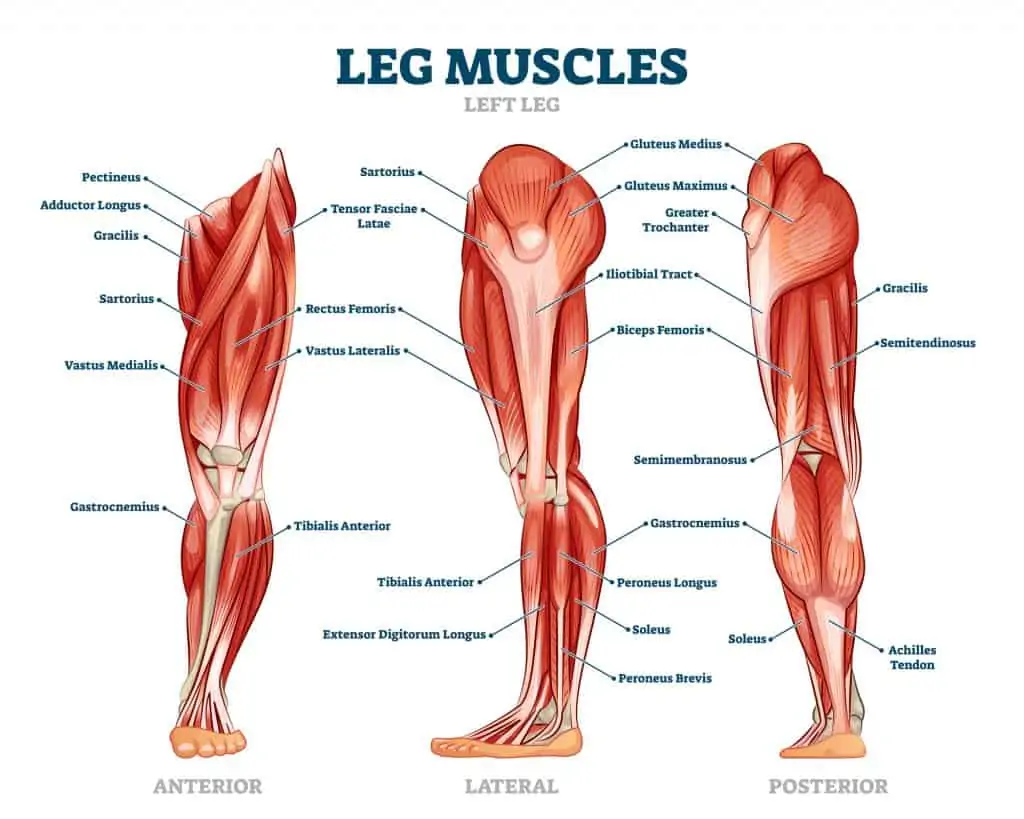
The psoas, iliacus, rectus femoris, and sartorius work together to aid in hip flexion with the leg at various angles. They also require some stabilization from the abdominal muscles to be most efficient.
What causes tight hip flexors?
The perception of hip flexor tightness can be due to a variety of reasons, including:
- Poor posture habits
- Too much sitting or overall sedentary behavior
- Lack of exercise
- Muscle weakness
- Poor movement patterns
- Cycling or other flexion based activities
- Injuries
- Excessive lumbar lordosis with anterior pelvic tilt
- Structural changes such as scoliosis, leg length discrepancy, and degenerative joint changes
How to tell if your hip flexors are tight
Here’s the monkey wrench. Are your hip flexors actually tight?
Hip pain and stiffness can be perceived as tightness.
A feeling of tightness can result from decreased flexibility, decreased strength, or a combination of both. Psoas issues can also present as lower back pain – what a trickster.
The video below demonstrates a quick test (called the Thomas Test) for hip flexor flexibility and whether or not it’s the iliopsoas or the rectus femoris (quads) as the culprit.
If your range of motion (ROM) is normal, stretching won’t fix that feeling of tightness in the hip flexors no matter how hard you try.
How to stretch your hip flexors
Not all “hip flexor” stretches are the same.
If you search “hip flexor stretch” online, you’ll see quite a variety. Remember, there are several muscles that aid in hip flexion during various ranges of motion, requiring different stretches.
You will see many people translate the weight forward into the front knee and arch the back.
Many like to take this stretch further by grabbing the foot and pulling it into the glutes, like in the picture below. This may give you the perception of a deeper stretch, but if you’re trying to target the psoas, you’ve missed the mark.
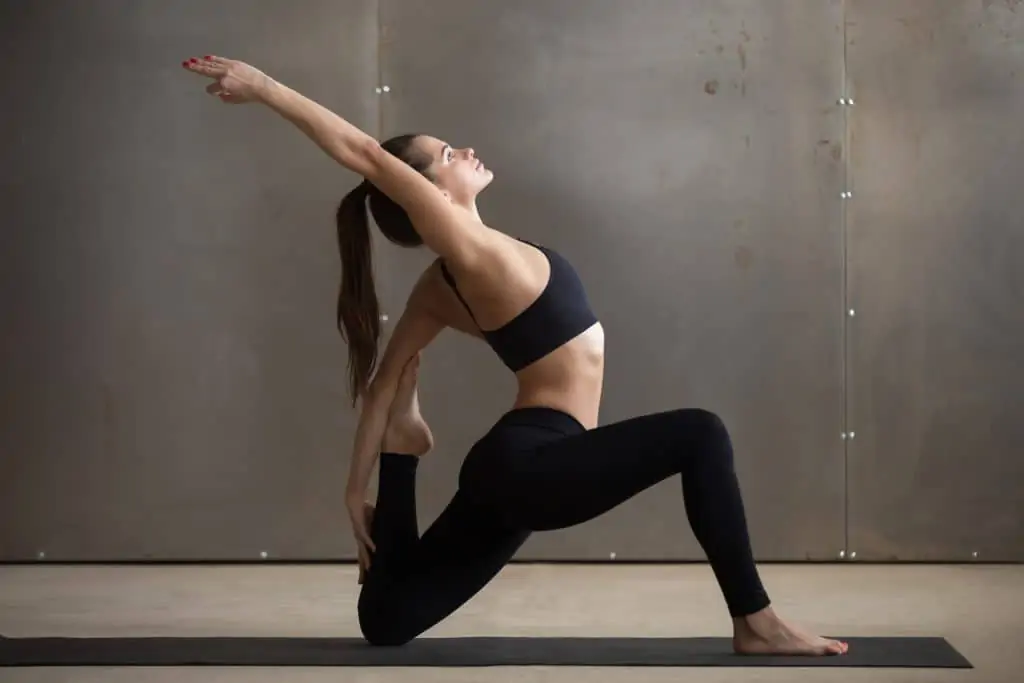
Human movement is rather tricky. By arching the back, you’ve now moved the psoas’ endpoints closer together, putting more slack on the muscle and thus, decreasing the stretch. More isn’t more!
This variation feels great, and there’s nothing wrong with doing it, but just know that if your goal is to target the psoas, this isn’t doing it.
When moving into a range of motion (ROM) to target the psoas, less is more, and maintaining a neutral spine is key to targeting this muscle.
We’ll go over how to stretch the psoas properly in the next section.
Stretches for tight hip flexors
There are several different positions for stretching the hip flexors and the best one for you will depend on what feels good in your body.
This section demonstrates a psoas stretch, and a quad stretch to catch multiple angles of the hip flexor muscle group.
Sometimes people get confused about exactly what (and where) you should be feeling sensations when you stretch. With so many variations in hip flexor stretches, this can be tricky.
In general, when stretching the psoas, you should feel pulling from the front of the hip and possibly up into the lower abdomen.
When targeting the quads, the sensation may start at the front of the hip and then extend down the front of the thigh. Sartorius also get s a stretch in this range of motion, I haven’t forgotten about him.
Kneeling hip flexor stretch (psoas)
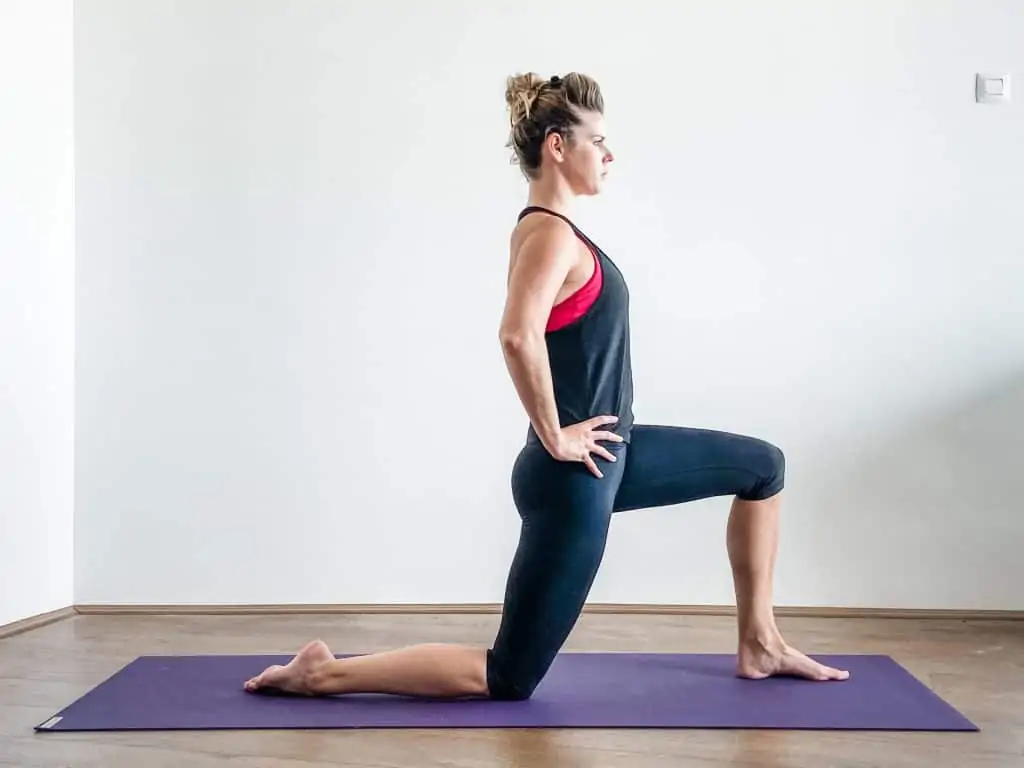
How to perform
- Kneel on a padded surface or blanket for knee joint comfort.
- Step one foot forward at a 90-degree angle. (The kneeling leg will get the stretch.)
- Lift yourself up tall and roll the pelvis under (tuck under or posterior tilt are other cues) – this helps avoid arching the lower back.
- Maintain this position as you translate slightly forward until you feel a pulling in the front of the hip and thigh.
- Hold for 20-30 seconds, keep breathing deeply.
- Repeat 2-3 times.
Translating the weight slightly more forward will also catch the upper portion of the sartorius.
Check out the Hip Flexibility Exercise Library for more ways to stretch the psoas (including one of my favorite gentle variations with a yoga block) and other hip muscles.
Quadriceps stretch
The quads group includes four muscles, but only one (the rectus femoris) crosses the hip joint to affect hip mobility. A prone quad stretch is just one of the many variations of quads stretching.
I like this version because you have the floor’s support and can focus on keeping your hip down on the mat, which improves alignment to target the rectus femoris.
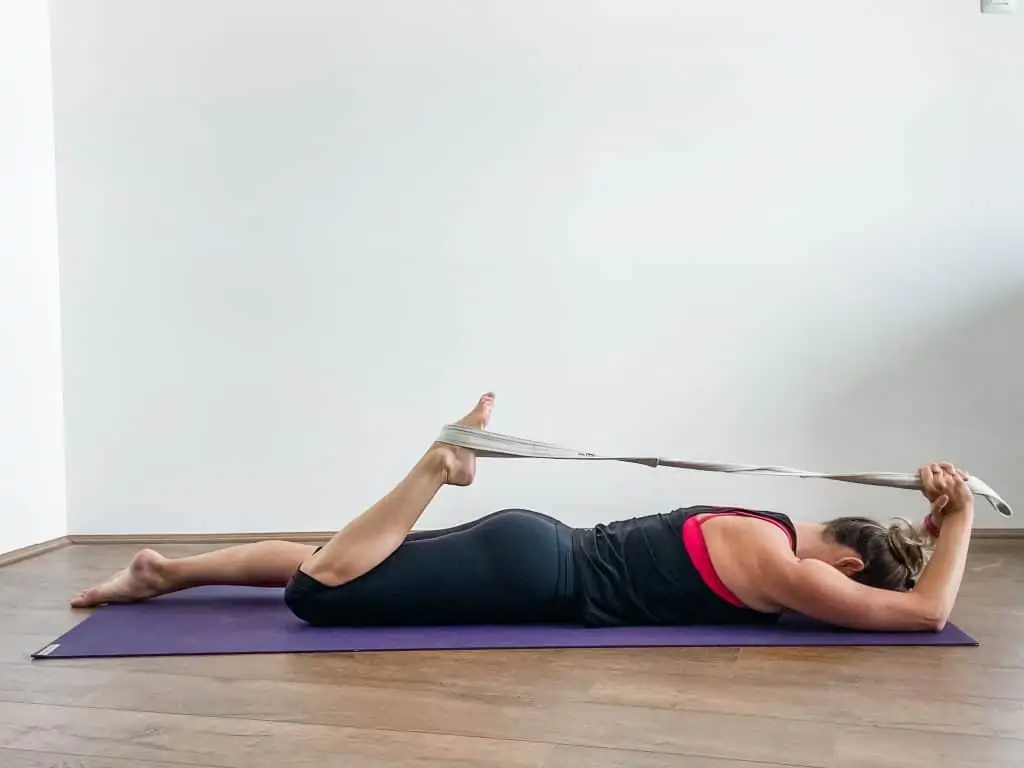
How to perform
- Reach back for your foot or place a strap around the foot
- Lie face down and draw the heel toward the glutes.
- Keep the knees in line with the hip and the hip in contact with the floor for best alignment.
- If you notice that your hip pops up as you draw the heel in, this can indicate tightness in the rectus femoris, and you should back off the intensity.
- Hold for 20-30 seconds.
- Repeat 2-3 times.
Whatever variation you choose, it’s essential to keep the knee level with this hip or slightly behind to target the rectus femoris. If the knee is in front of the hip, there won’t be a stretch on this portion of the quad.
If you don’t have a strap, the Original Stretch Out Strap is a convenient option to accommodate all flexibility levels.
Visit the Knee Flexibility Exercise Library for more variations on quad stretches.
Sartorious stretch
Sartorius is a little trickier to stretch because of its anatomy. This video does a great job of explaining the technique.
Strengthening exercises for tight hip flexors
A tight hip flexor can be a weak hip flexor. Though this sounds counterintuitive, weak hip flexors may feel chronically tight. Static stretching may bring some temporary relief but isn’t all the pieces to the puzzle.
If consistent stretching never seems to fix the problem, you’ll need to turn to strength exercises to fix tight hip flexors.
People tend to be afraid to strengthen a tight muscle, fearing that strengthening will make it feel tighter.
In reality, it does the opposite. Strengthening exercises help the nervous system understand how to move naturally again.
You often hear phrases like “I’m not strong enough” or “I’m not flexible enough,” but you never hear people complaining of being too strong.
Here are three examples of exercises that target the hip flexors to help you put a face to a name.
Marching with resistance
This exercise can be progressed in many ways such as by adding a heavier resistance band or progressing to a standing position.
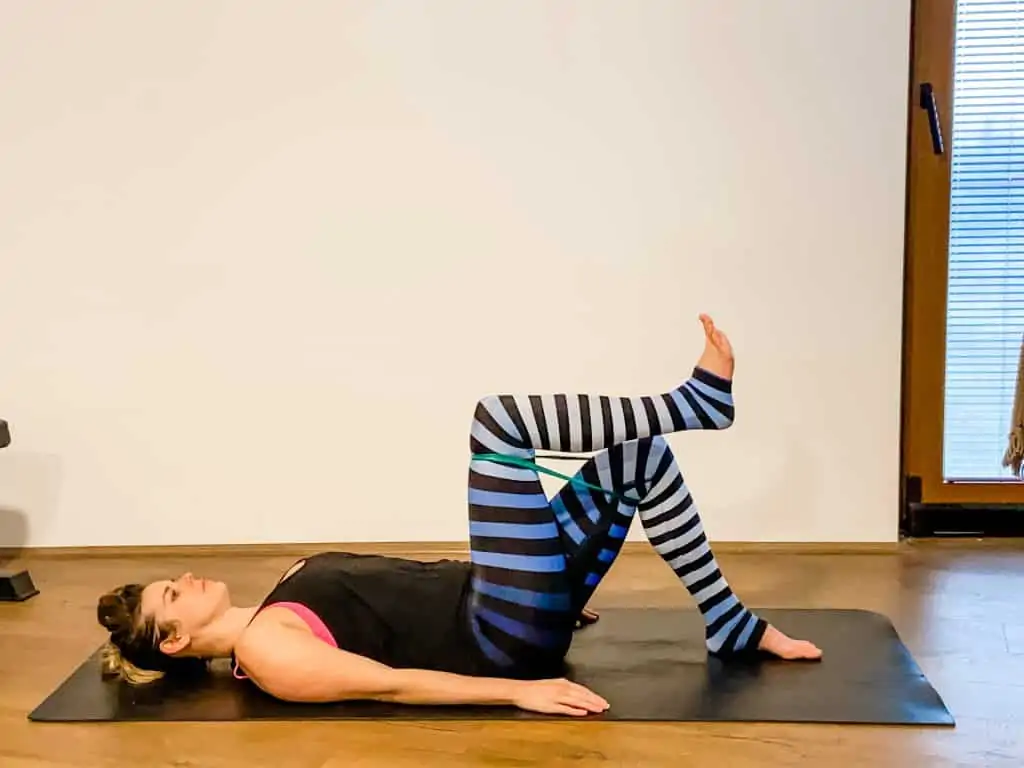
How to perform
- Place a resistance band around your knees.
- Brace your abdominals and slowly march one knee at a time toward your chest
- This can be done one knee at a time, in a 90-90 position, or standing for an added challenge.
- Perform 1-3 sets of 10 on each leg
Mountain climbers
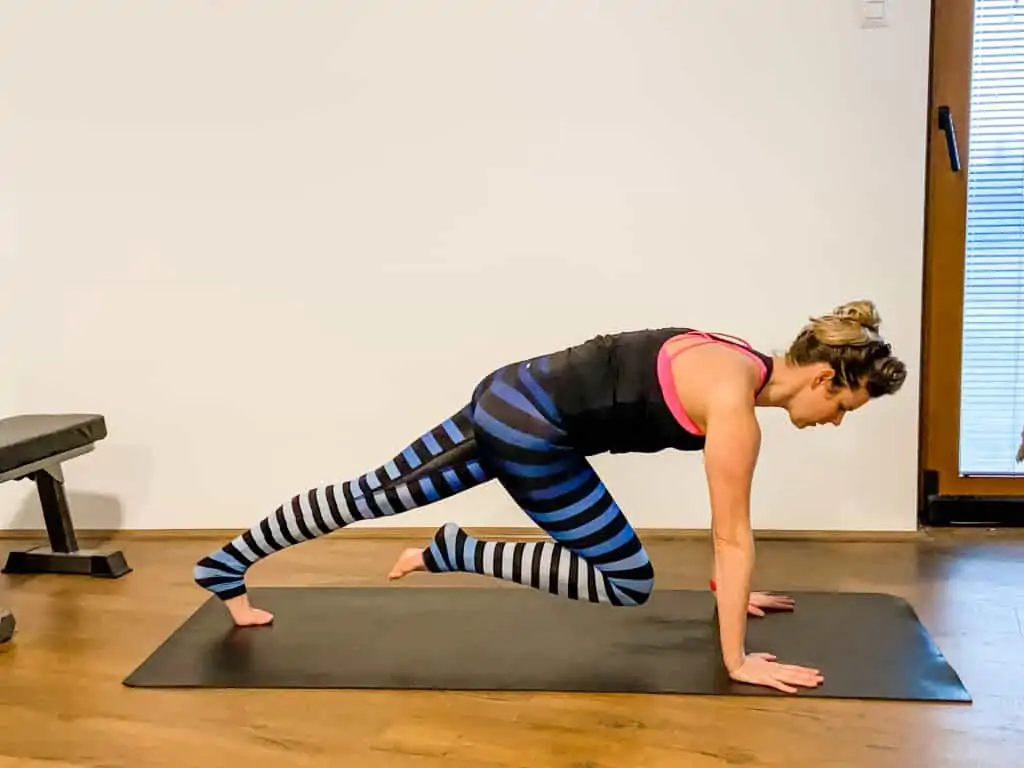
How to perform
- From a plank position, brace your abdominals and draw one knee at a time toward your chest.
- Alternate legs and perform 1-3 sets of 10 on each leg.
- Try to keep your hips stable.
- Optional to add a resistance band for extra challenge
Hip flexion isometrics
Isometrics allow you to engage a muscle without moving through a range of motion.
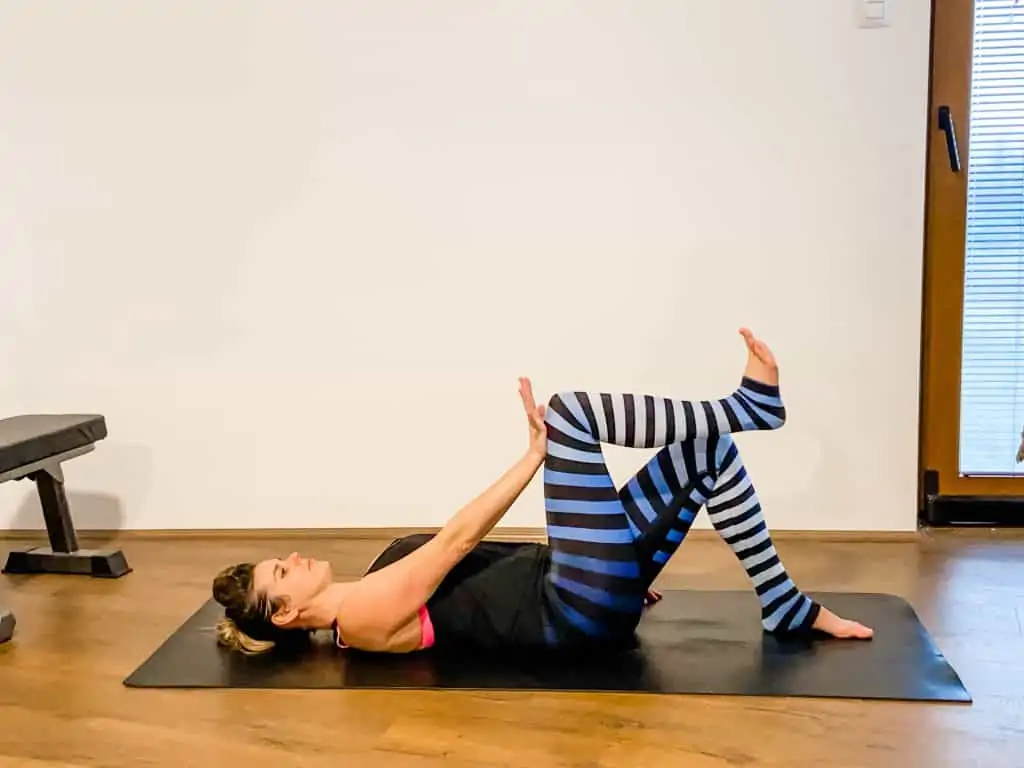
How to perform
- Lie on your back with your feet flat on the floor.
- Extend your R arm and press your R knee into your palm.
- Hold for 5-10 seconds, repeat 10 times.
- Repeat on the opposite side.
More exercises for tight hip flexors
It’s also common for the hip flexors to overcompensate due to weakness in other muscle groups.
Don’t forget to strengthen other major muscle groups like the hip adductors and glute muscles (hip extensors). These muscles provide valuable strength and stability to the pelvis and hip.
The glutes are some of the strongest and most powerful muscles in the body, yet are often weak compared to other muscle groups, even in active people (unless you spend time strengthening them).
Glute weakness can contribute to many issues, including tight hip flexors, IT Band issues, and low back pain. It’s never a bad idea to strengthen your glutes.
Side note: The term “corrective exercise” is thrown around a lot these days.
Corrective exercises are specific exercises to improve muscular imbalances or movement pattern impairments provided by a physical therapist or corrective exercise specialist for a specific goal after a movement assessment. So the results you get from googling “corrective exercises for X” are only useful if they’re correct for you.
Lateral walk with a resistance band
Loop resistance bands are handy for glute strengthening and don’t take up much room. Many bodyweight exercises can be progressed to include a band as your strength increases to make exercises more challenging.
There are several variations of this exercise that can make the movement easier or more difficult.
How to perform
- Place the loop resistance band just above the knees.
- Squat down about ¼ of the way and take 5-10 side steps in one direction and then repeat in the opposite direction.
- Repeat 4-5 times (or until fatigued)
Extra tips:
- Be sure to stay in your squat while sidestepping and keep your toes pointing forward to target the right muscles.
- Avoid allowing the knee to collapse inward.
Quadruped glute lift
This exercise might look easy, but you’ll feel the burn in a hurry. This exercise is sometimes called a donkey kick.
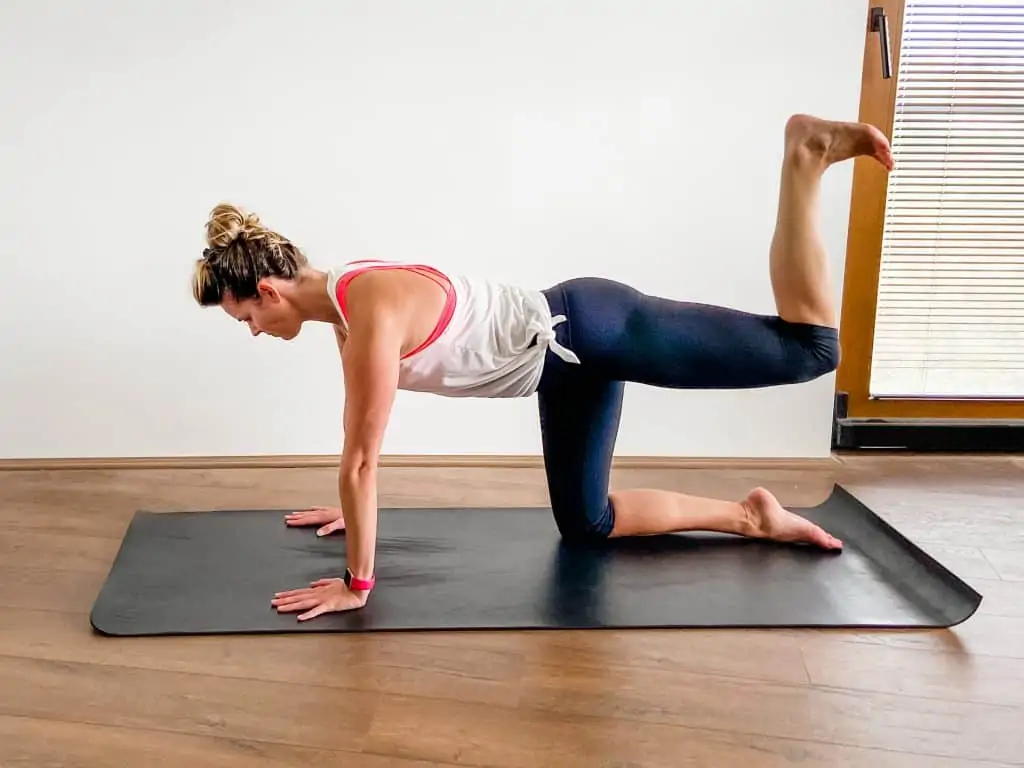
How to perform
- From a tabletop position, brace your core and lift one leg until it’s in line with the rest of your body.
- Bend your knee to 90 deg and flex your foot
- Slowly bring your knee down to the mat and lift back up into this position, leading with your heel.
- Alternatively, you can stay in this position and do small pulses, focusing on using the glute to facilitate this movement.
- Perform sets of 10-20 reps at a time.
- 2-3 times per side.
Extra tips
- Try not to move anything but your leg.
- If you find that you’re arching your back, this makes the exercise less effective. You can come down to your forearms to help keep the focus on your glutes.
Bridge
A bridge is a basic glute strengthening exercise that can be modified for every fitness level.
Advanced versions include:
- single-leg bridges
- bridging with your feet on a higher or unstable surface
- progressing to a hip-thrust with weight
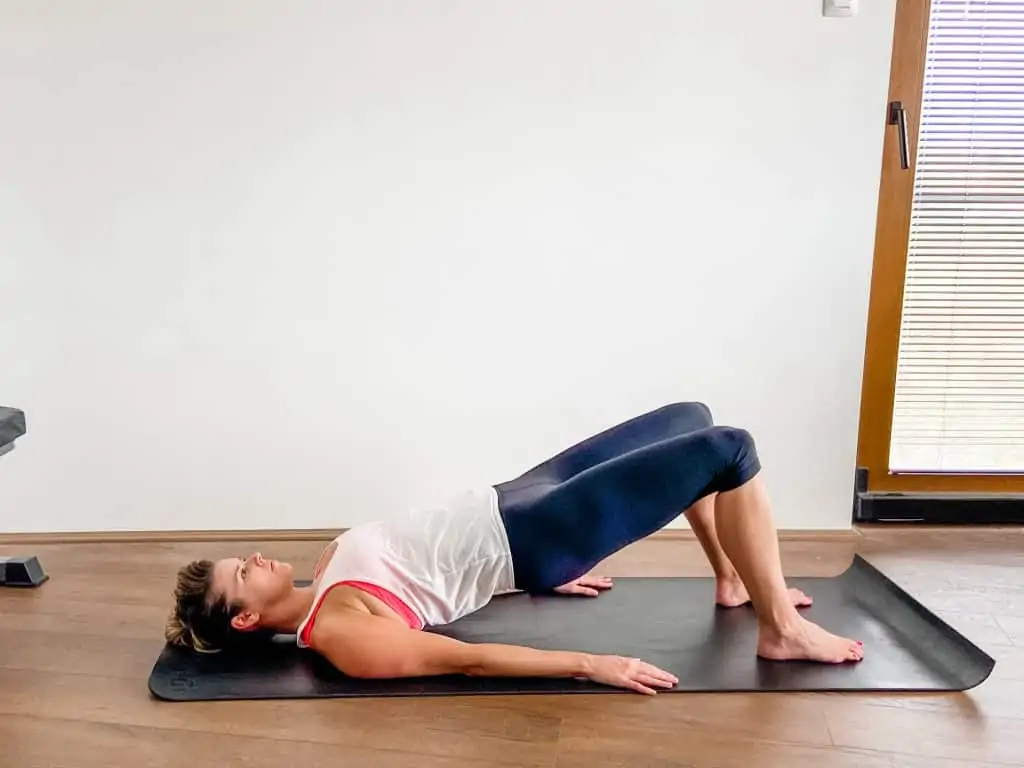
How to perform
- Lie on your back with your feet flat on the floor.
- Squeeze your glutes and press your hips up. If you’re arching your back, you’ve gone too far.
- Slowly lower your hips back down.
- Repeat for 2-3 sets of 10.
Extra Tips
- Press into your heels to avoid getting a cramp in the hamstrings.
- Bringing the heels closer to the hips will put more focus on the glutes, but may limit how high you can lift.
- If you have pain in your back when lifting, you went too high.
- It’s less about height and more about making sure the glutes are doing the work for this exercise.
Compound glute exercises
A compound exercise works multiple major muscle groups at one time.
Neto WK et al. did a study to determine which exercises had the highest levels of glute activation.
According to the study, these exercises were among the winners:
- Step-up variations (e.g. forward step-up, side step-up)
- Hip thrusts
- Squats
- Deadlifts
- Lunges
Foam rolling for hip flexors
Foam rolling can be an effective way to mobilize soft tissue. If quad tightness is also limiting your hip flexion, foam rolling the quads can also be helpful.
The psoas is deep in the abdomen and challenging to get to for even skilled practitioners. (More on this in a minute.)
For this technique, you won’t be releasing the psoas. It will be more of a release for the rectus femoris, sartorius, and fascia at the front of the hip joint.
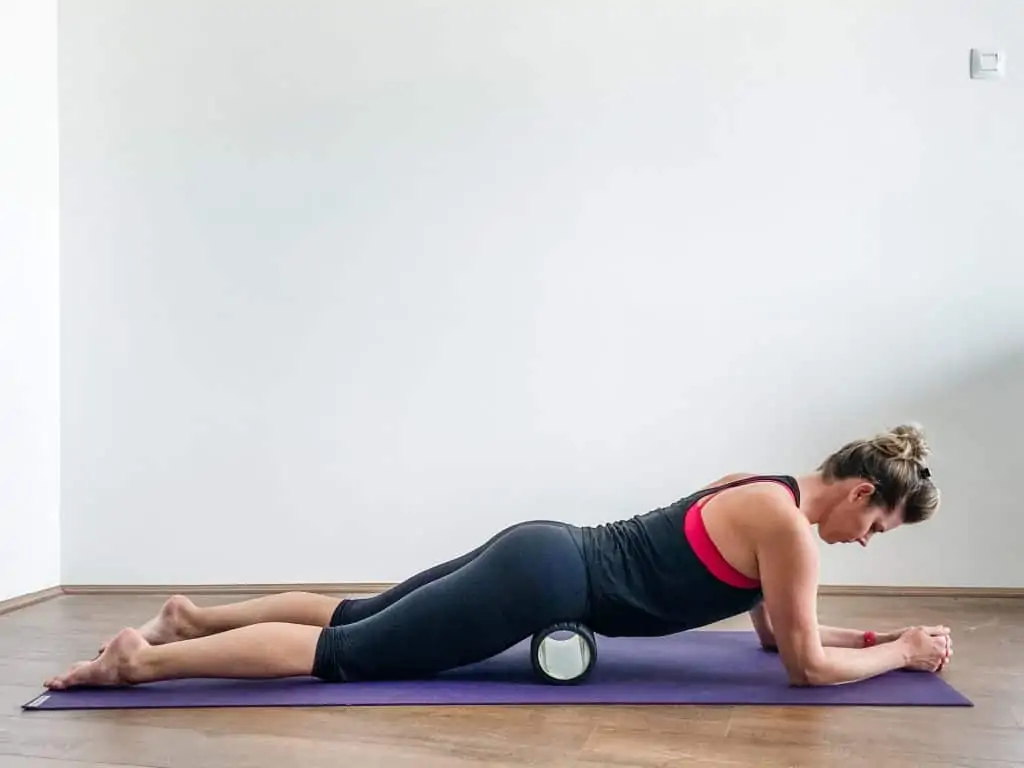
- Locate the “hip bones” on the front of the pelvis.
- The area you’re looking to release is between the front of the pelvis and the very top of the thighs.
- Lie face down and place the foam roller where the hips meet the pelvis.
- Support yourself on your elbows as if you were in a plank position.
- Do not roll higher than the “hip bones” on the pelvis. Even just staying still and allowing the hips to melt into the foam roller will feel relieving.
- Perform for 30 seconds to 2 minutes
Visit the foam roller exercise library for more foam rolling tutorials.
Do psoas release tools work?
I have mixed feelings about using lacrosse balls or other tools marketed to release your psoas. This seems to be the latest craze of Instagram ads flooding my feed.
I’m not going to recommend any tools, and here’s why.
The psoas muscles are deep in the abdomen, covered by many other structures, and difficult to release for even those who are properly trained.
It’s questionable whether you can reach the psoas in the first place. However, there are plenty of people out there willing to demonstrate this technique and sell it like it’s the best thing since sliced bread – with little knowledge of anatomy and precautions, which is pretty scary.
There are many vital structures like intestines, major vessels, nerves, and reproductive organs in the same area. This type of release is not for everyone and is even contraindicated for some (for example, I wouldn’t go jamming a tool into ovarian cysts).
My advice? Speak with your physical therapist to determine if this technique is safe for you and learn proper technique before jabbing anything you find on ye olde internet into your abdomen.
Releasing your psoas is getting a little overrated anyway and is of little value if you don’t also tackle why it became tight in the first place.
How do you fix tight hip flexors?
Hip tightness can be tricky and not always as straightforward as it seems. Biomechanics are complex, and issues tend to create problems that feed on each other until it’s one big sticky mess.
Excessive stretching is not the answer. To fix tight hip flexors, you need to tackle the root cause of the issue.
Tight hip flexors require an evaluation and a multi-pronged approach as there’s usually more than meets the eye. If your symptoms aren’t resolving, it’s a good idea to get a physical therapy evaluation and find out what you need to focus on.
A good rule of thumb to stay on top of tight hip flexors is to maintain good range of motion and strength in all major muscle groups and avoid too much sitting.
Keep moving!
References
Aslan H, Buddhadev HH, Suprak DN, San Juan JG. ACUTE EFFECTS OF TWO HIP FLEXOR STRETCHING TECHNIQUES ON KNEE JOINT POSITION SENSE AND BALANCE [published correction appears in Int J Sports Phys Ther. 2019 Apr;14(2):173]. Int J Sports Phys Ther. 2018;13(5):846-859.
JOSPT Perspectives for Patients. Strengthening Your Hip Muscles: Some Exercises May Be Better Than Others. J Orthop Sports Phys Ther 2013;43(2):65. doi:10.2519/jospt.2013.0501
Lehecka BJ, Edwards M, Haverkamp R, et al. BUILDING A BETTER GLUTEAL BRIDGE: ELECTROMYOGRAPHIC ANALYSIS OF HIP MUSCLE ACTIVITY DURING MODIFIED SINGLE-LEG BRIDGES. Int J Sports Phys Ther. 2017;12(4):543-549.
Michael V Winters, Charles G Blake, Jennifer S Trost, Toni B Marcello-Brinker, Lynne Lowe, Matthew B Garber, Robert S Wainner, Passive Versus Active Stretching of Hip Flexor Muscles in Subjects With Limited Hip Extension: A Randomized Clinical Trial, Physical Therapy, Volume 84, Issue 9, 1 September 2004, Pages 800–807, https://doi.org/10.1093/ptj/84.9.800
Mills M, Frank B, Goto S, et al. EFFECT OF RESTRICTED HIP FLEXOR MUSCLE LENGTH ON HIP EXTENSOR MUSCLE ACTIVITY AND LOWER EXTREMITY BIOMECHANICS IN COLLEGE-AGED FEMALE SOCCER PLAYERS. Int J Sports Phys Ther. 2015;10(7):946-954.
Moore D, Semciw AI, Pizzari T. A SYSTEMATIC REVIEW AND META-ANALYSIS OF COMMON THERAPEUTIC EXERCISES THAT GENERATE HIGHEST MUSCLE ACTIVITY IN THE GLUTEUS MEDIUS AND GLUTEUS MINIMUS SEGMENTS. Int J Sports Phys Ther. 2020;15(6):856-881. doi:10.26603/ijspt20200856
Neto WK, Soares EG, Vieira TL, et al. Gluteus Maximus Activation during Common Strength and Hypertrophy Exercises: A Systematic Review. J Sports Sci Med. 2020;19(1):195-203. Published 2020 Feb 24.

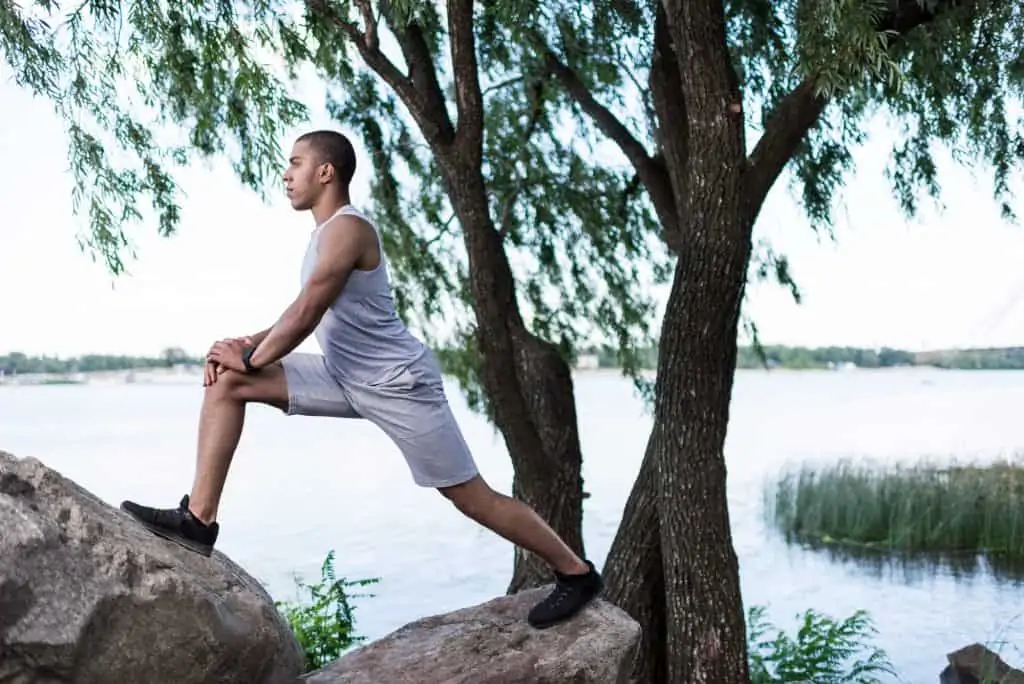
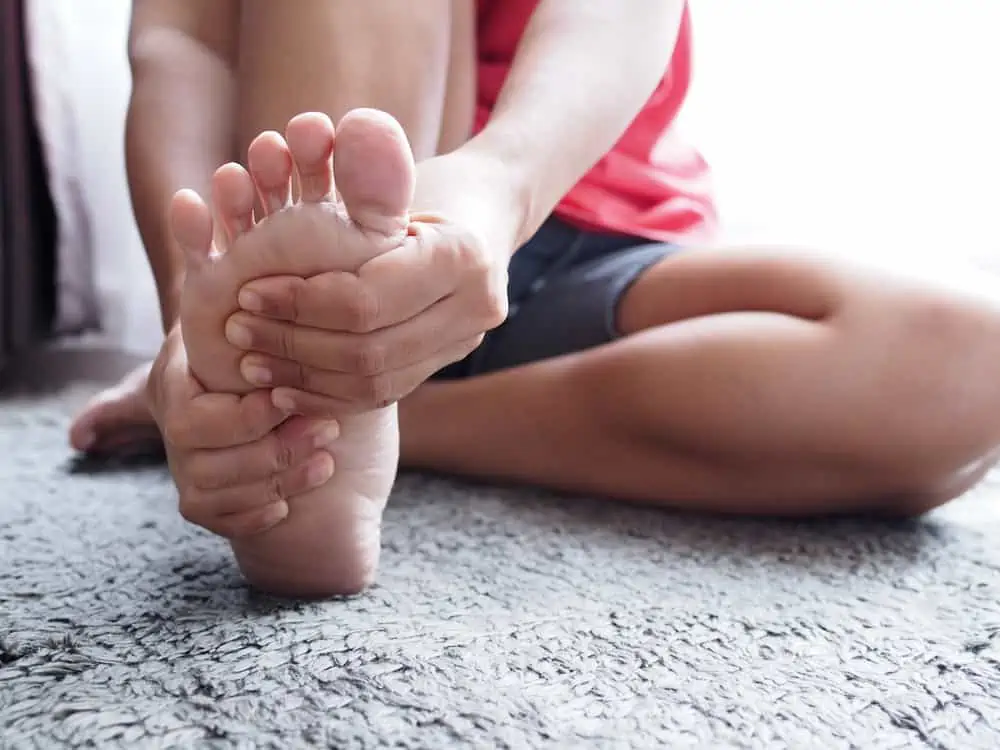
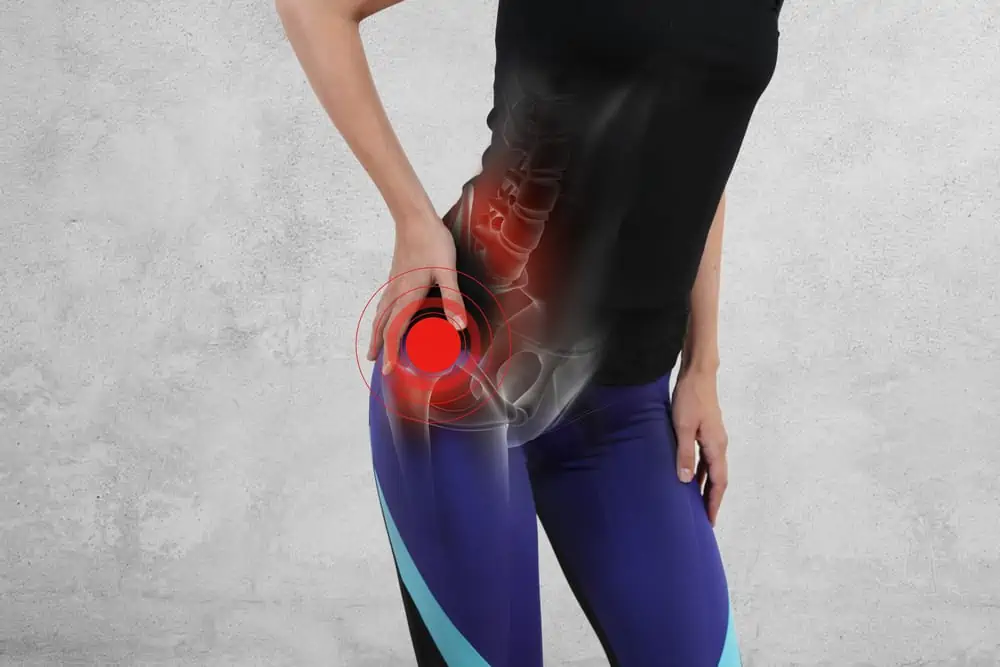
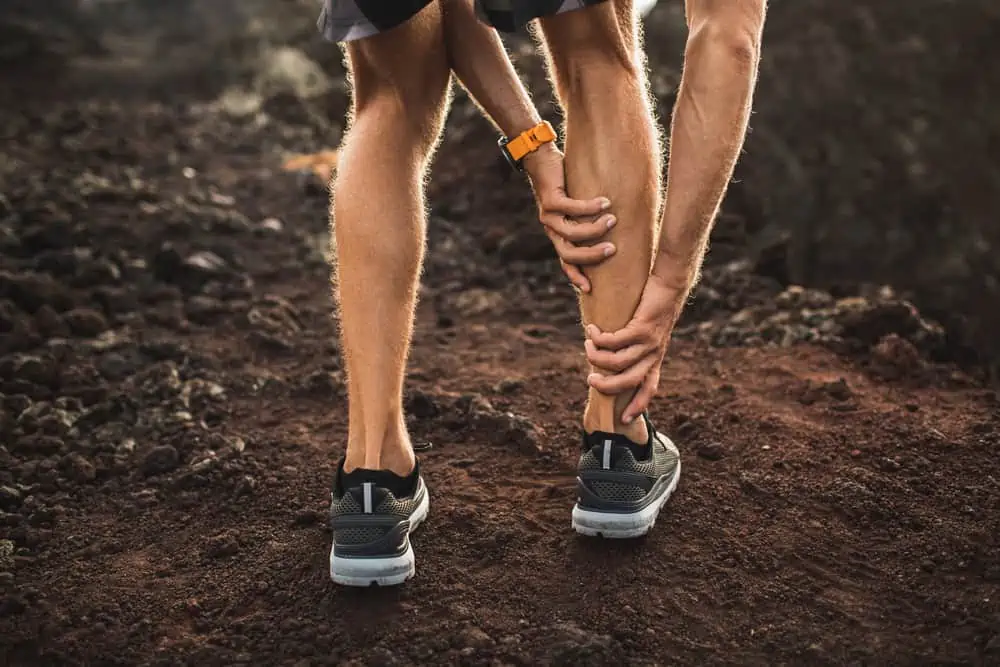
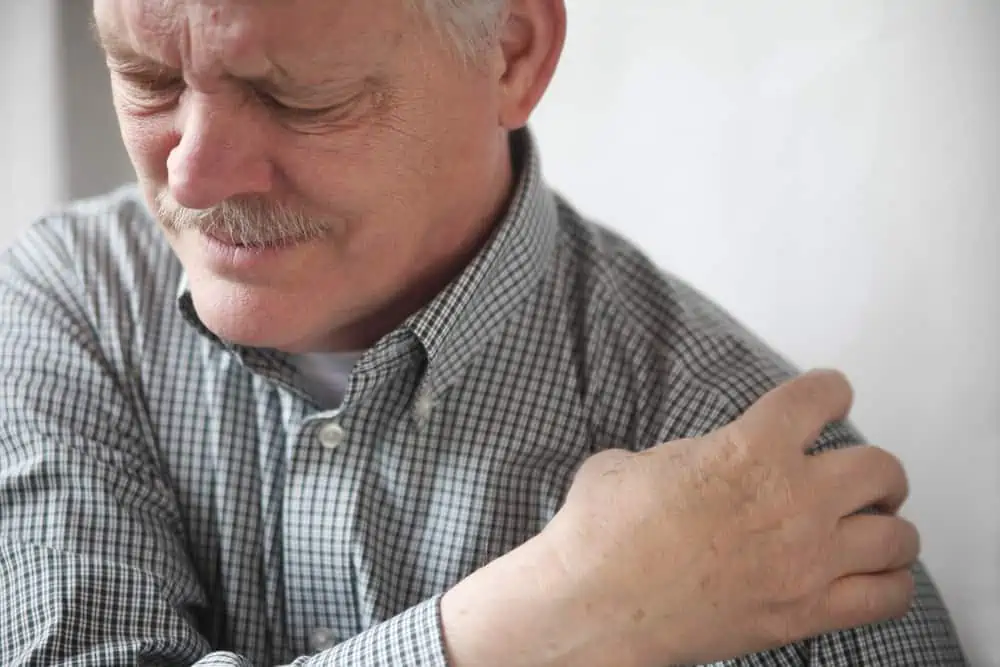
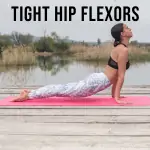
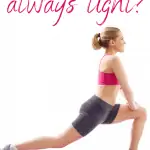
I have constantly tight hip flexors so this article came at the perfect time!
Awesome, glad you found it helpful!
Thank you for sharing your knowledge! My hips often get tight from either sitting, or forgetting to stretch after exercise. I will use some of your tips!
Thanks for reading, hope it helps.
I need to try this thanks for sharing
Thanks for reading.